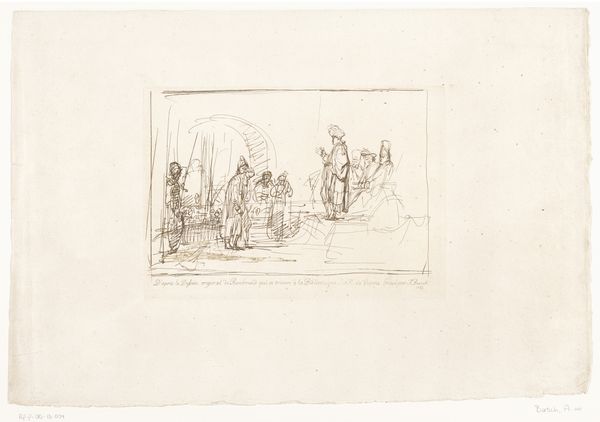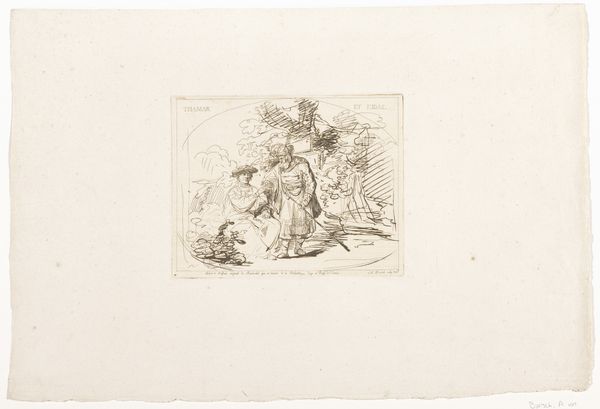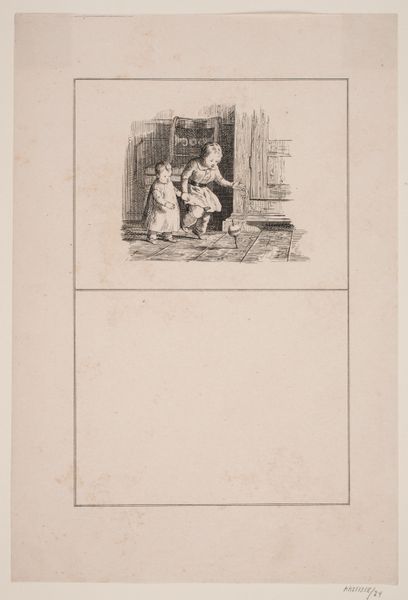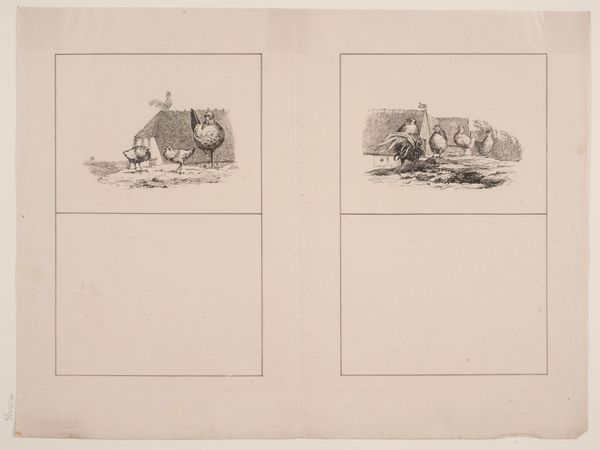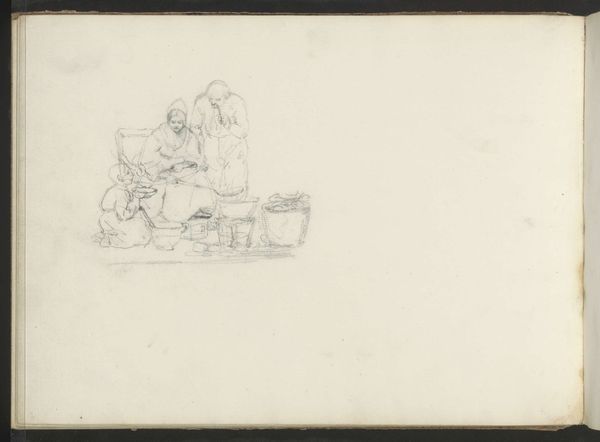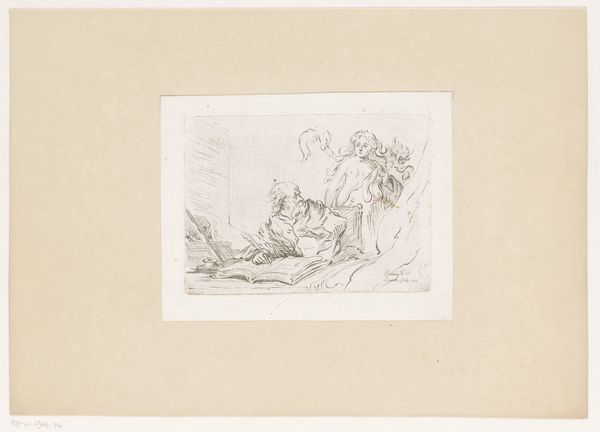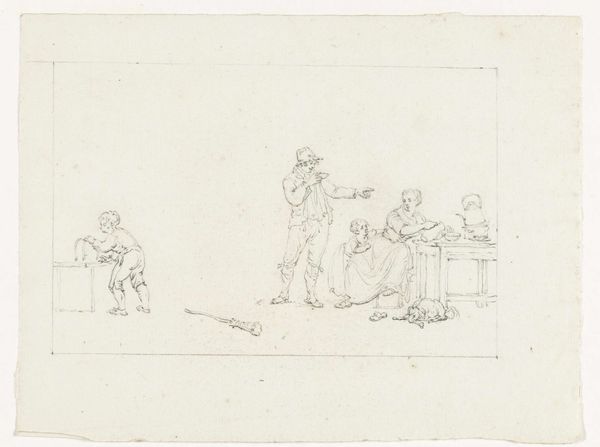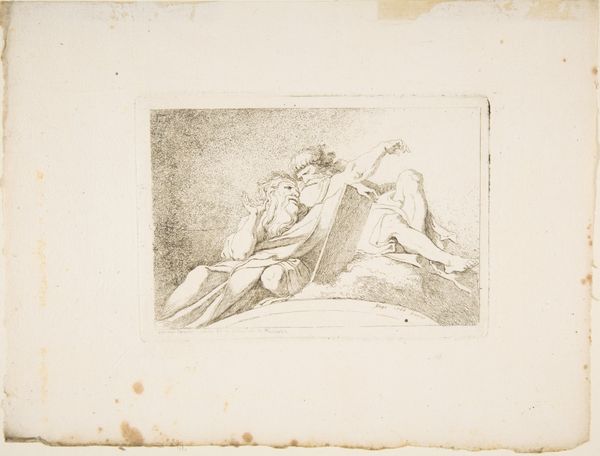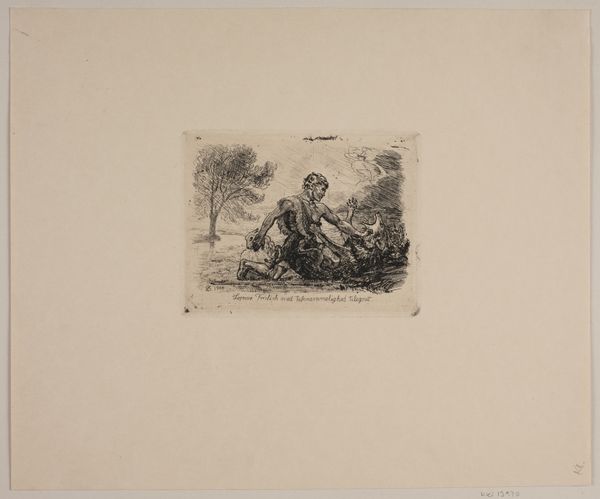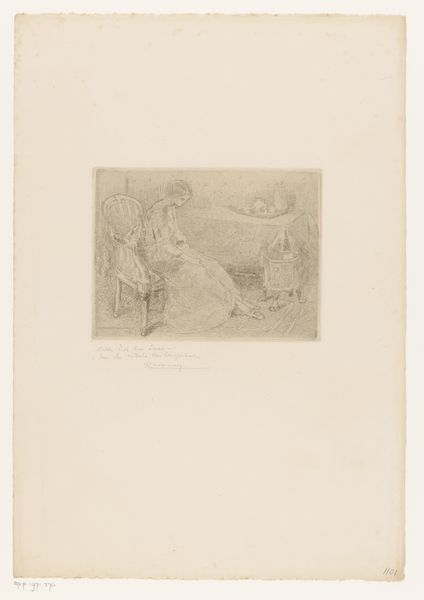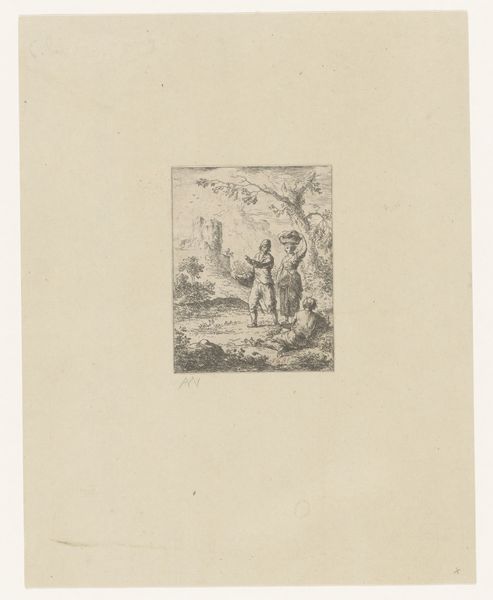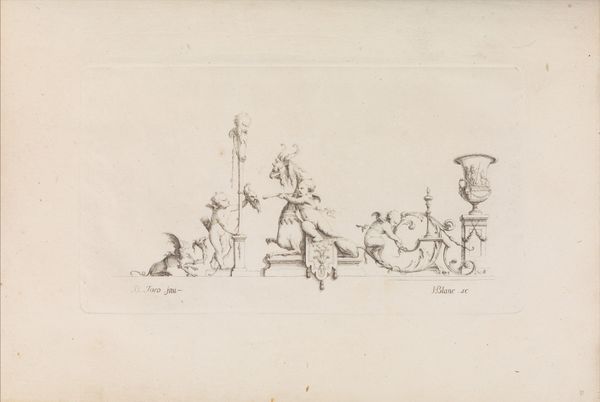
Dimensions: height 200 mm, width 246 mm
Copyright: Rijks Museum: Open Domain
Curator: This is Adam von Bartsch’s 1782 etching, “Christus bij Martha en Maria," currently held at the Rijksmuseum. Editor: The eye certainly traces the artist’s mark; those spidery, delicate lines evoke a somber tone. Curator: The scene depicts the biblical story of Jesus visiting the home of sisters Martha and Mary, the former focused on hospitality while the latter sits at Jesus’s feet, listening to him. Editor: Yes, and the composition reinforces that tension—Martha isolated on the left, the other figures clumped on the right—bound by shared intent. Notice how von Bartsch directs our gaze through those fine hatch marks which defines this separation? Curator: Exactly. That contrast really speaks to the active versus contemplative life. Martha's stance almost mirrors a burdened Atlas, weighed down by worldly concerns, compared to the serenity radiating from Mary listening to Jesus. This has, over the centuries, been interpreted to express the superiority of devotion over domesticity. Editor: Intriguing! However, could we also consider that formal arrangement not just symbolically but aesthetically? The balanced distribution of light and dark creates visual equilibrium, even as it signals narrative imbalance. The architectural details—the unseen ceiling, the partial oven or hearth—form these abstracting geometric counterweights. Curator: I see your point, especially considering the influence of Baroque conventions. But also consider this as part of the larger historical canvas, particularly considering the role of religion. It carries significant cultural and historical memory. Editor: Undoubtedly. Yet, by stripping away colour, focusing solely on line and form, von Bartsch gives the narrative a different resonance, almost timeless. He brings this emotional distance into his baroque composition which offers modern interpretations. Curator: So in the end, perhaps it becomes more about a tension – not simply a polarity. Maybe the artist isn’t advocating, but simply revealing, prompting reflection on action versus contemplation, visible in those striking lines. Editor: Indeed, its power is derived not only from what the scene represents, but in how that representation is structured— the semiotic tension elevating the artwork to significance.
Comments
No comments
Be the first to comment and join the conversation on the ultimate creative platform.
